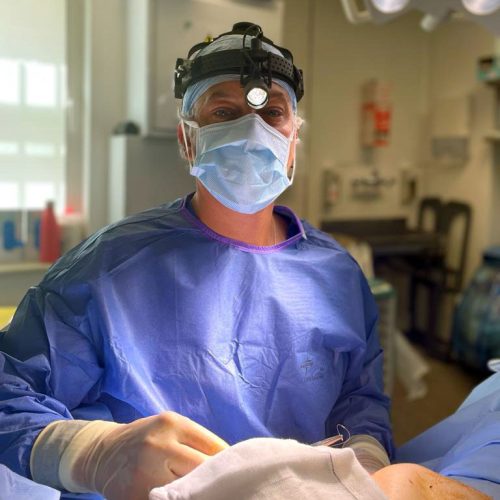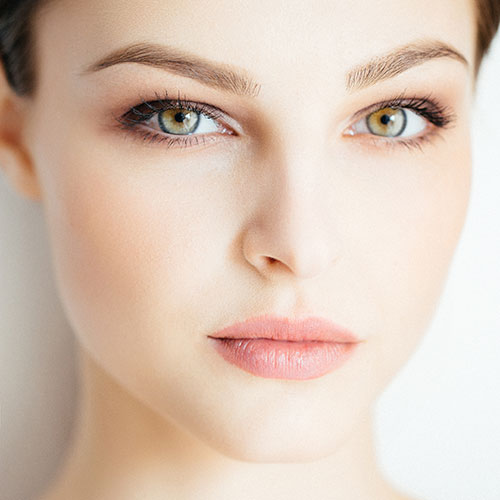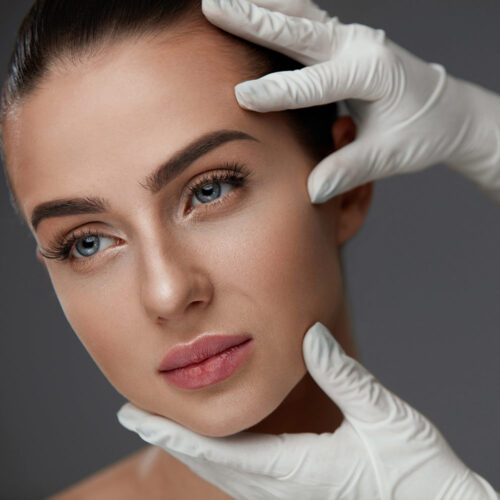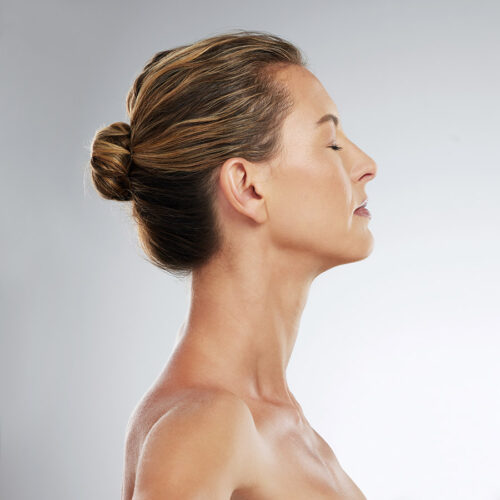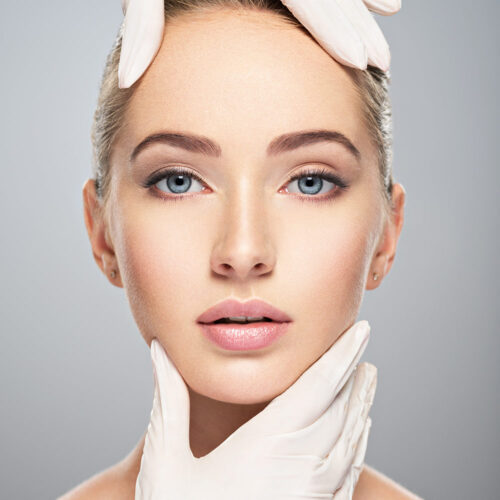Direct Brow Lift
Mr Olivier Amar - Leading Plastic Surgeon in Chelsea, London
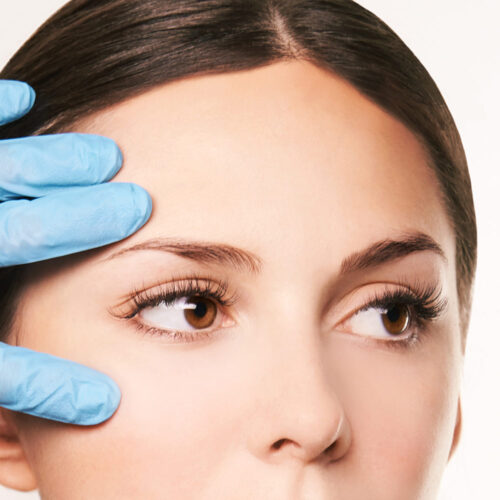
Direct Brow Lift: A Targeted Solution for Brow Ptosis
What is Direct Brow Lift surgery?
Brow drooping typically occurs as part of the natural ageing process, often alongside upper eyelid sagging and excess skin. A direct brow lift, commonly known as a browpexy or direct skin excision brow lift, is a surgical procedure to elevate drooping eyebrows by removing a strip of skin directly above the eyebrow. An incision is made at the upper border of the eyebrow. A segment of skin and potentially underlying tissue is removed from the area, the incision is closed, lifting the brow position by eliminating the excess tissue.
This technique is particularly beneficial for patients experiencing brow ptosis (drooping brows), which can create a tired, angry or aged appearance. In some cases, sagging brows can even obstruct vision, making the procedure both aesthetic and functional. The main advantage of this approach is that it allows for precise control over how much the brow is elevated. It offers a less invasive alternative to endoscopic, coronal or hairline brow lift approaches.
A direct brow lift can subtly rejuvenate your face by opening the eye area, effectively:
- Raising the eyebrows to a more youthful position
- Minimising forehead wrinkles and creases
- Creating a more refreshed appearance
- Improving a tired, sad or aged appearance
Addressing ageing concerns early can often delay the need for more extensive surgical procedures in the future.
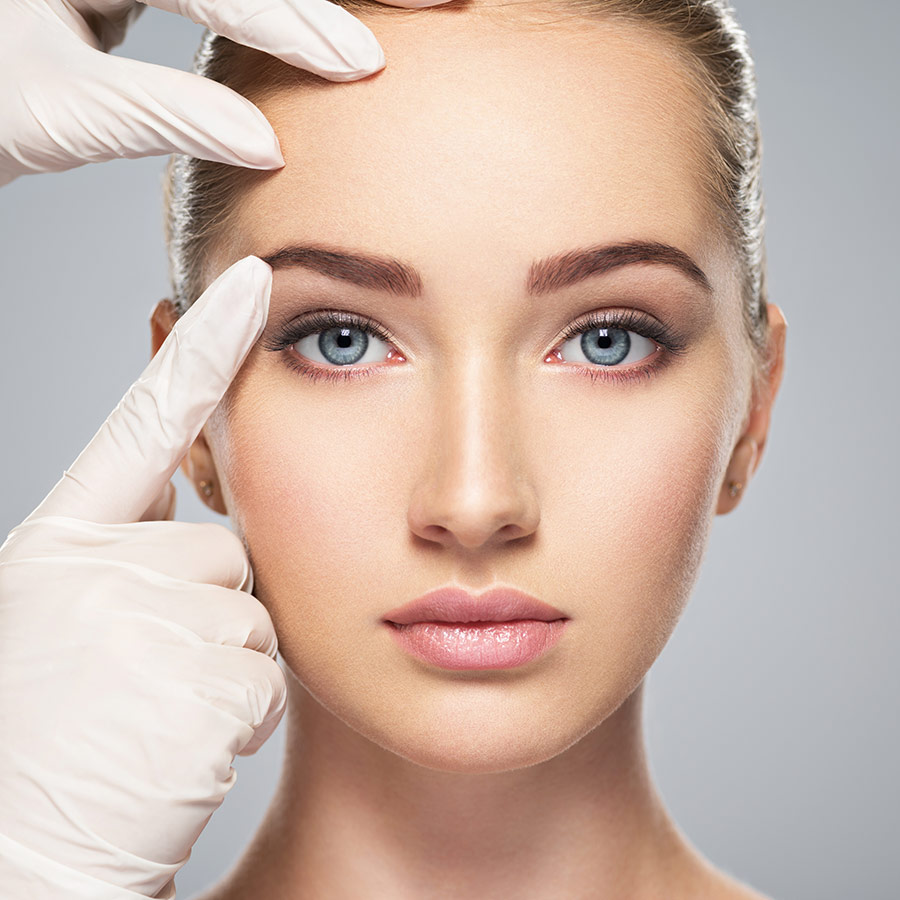
Your consultation
Whether meeting in person or remotely, your consultation with Mr Olivier Amar provides a comprehensive discussion of your hoped for goals and treatment options. To get the most out of your consultation, we recommend reviewing information about your area of interest beforehand.
During your consultation, Mr Olivier Amar will listen to your desired outcomes and goals, conduct a thorough assessment, present appropriate treatment options and explain procedures in detail. This will include a step by step surgical process, required preparation, recovery timeline, scar placement and management, anaesthesia options, and potential risks and complications.
A consultation ensures you receive comprehensive information about all options, and understand both benefits and limitations of proposed procedures. You will have the opportunity to ask as many questions as you wish before you decide the next steps together, including the option to take no action.
Types of Brow Lifts
The different techniques that can be used in a brow lift are:
Coronal brow lift (Traditional brow lift): Involves an incision made behind the hairline, extending from ear to ear, to lift the forehead skin and underlying tissues.
Direct Brow Lift (Browpexy): An incision is made at the upper border of the eyebrow. A segment of skin and potentially underlying tissue is removed from the area, the incision is closed, lifting the brow position by eliminating the excess tissue.
Endoscopic brow lift: Small incisions are made behind the hairline and a thin camera, called an endoscope is used to analyse the muscles and tissues lying underneath your forehead, for a less invasive approach.
Hairline brow lift: An incision is made at the junction where the forehead meets the hairline. This technique involves the careful removal of a strip of skin from the upper forehead.
Lateral Temporal Brow Lift: Uses smaller incisions in the temples, to address sagging skin around the peri-orbital region.
Advanced Facial Rejuvenation
Mr Olivier Amar specialises in facial rejuvenation procedures. As every face is unique and we all age in different ways, he will conduct a comprehensive facial assessment, carefully developing a tailored approach to help patients achieve subtle, natural rejuvenation, without the obvious signs of surgery.
Risks associated with surgery
Every surgical procedure, while performed with the utmost care and expertise, carries inherent risks. Mr Olivier Amar ensures all patients are fully informed about potential complications before proceeding with any treatment.
General surgical risks include post-operative infection, bleeding and haematoma formation, scarring and wound healing complications, and anaesthesia related complications. During your consultation, Mr Olivier Amar will provide detailed information about procedure specific risks, explain preventive measures and safety protocols, answer all questions about potential complications and provide you with all the information needed to make an informed decision.
Preparing for Your Surgery
All surgical procedures are teamwork between the surgeon and the patient. Just as a runner trains for a marathon, preparation is key for optimal recovery.
From the time you book the procedure ensure you maintain regular, gentle exercise, follow a balanced, nutritious diet, ensure adequate sleep and rest, and manage stress levels effectively. Alcohol consumption should be reduced and smoking stopped or minimised. If a patient feels prepared for surgery, they will arrive for their procedure feeling positive which in turn will reduce any anxiety and encourage stress free recovery.
The day before surgery, our dedicated pre-assessment nursing team will reconfirm your admission time, review fasting requirements, address any last minute questions and provide final preparation instructions.
Type of anaesthesia
Direct brow lift surgery may be performed under local anaesthetic or total intravenous anaesthesia (TIVA), a technique of anaesthesia which uses a combination of agents given exclusively via the intravenous route without the use of gas anaesthesia. This means you will sleep comfortably throughout the procedure and wake immediately afterwards with a significantly reduced likelihood of feeling groggy or nauseous. The anaesthesia will be explained to you by your Anaesthetist during the preoperative consultation.
Having surgery under total intravenous anaesthesia (TIVA) allows you to go home the same day to rest and recuperate. Alternatively, we are happy to arrange the procedure at a hospital with an overnight stay facility, organise a nurse to stay with you overnight, or assist with local accommodation arrangements. Mr Olivier Amar will discuss your anaesthesia options and aftercare support in detail during your consultation.
Recovery Guide
After surgery, you may experience bruising and swelling on the forehead, brows and possibly under the eyes. To minimise swelling during the initial recovery period, keep your head elevated. When sleeping, use additional pillows to maintain this elevated position. Immediately after surgery you can expect mild pain and discomfort, which can be managed by a pain killer prescription, provided on the day of surgery by your anaesthetist, if required.
Most patients find that bruising and swelling subsides within one to two weeks after the procedure. Depending on the type of daily activities, you should be able to resume daily activities within 7-10 days and return to gentle exercise after approximately 3 weeks.
Aftercare Information
At your first post-operative appointment with the nurse, scheduled 2-3 days after surgery, incision sites will be reviewed and dressings changed. You will return for an appointment with the nurse at 14 days, at this point your incision sites will be reviewed again, stitches removed and initial healing will be assessed. At six weeks after surgery, Mr Olivier Amar will evaluate your overall healing and give you next steps to follow.
It is your responsibility to attend all scheduled appointments. Failing to attend appointments or follow post-operative instructions may impact your results and final outcome. Regular monitoring ensures optimal healing progression and early detection of complications. Mr Olivier Amar will discuss the post-operative schedule in detail during your consultation.
Scar Placement and Management
Direct brow lift scars will be located directly above the eyebrow, at the upper border of the eyebrow. Scar healing time varies, but most scars are red at first, change to purple, then fade to become paler over 3-6 months. As a leading London based cosmetic surgeon, Mr Olivier Amar specialises in advanced scar management and prevention techniques. Leading up to your surgery or as part of your post-surgical care, a scar management protocol may be initiated using steroid injections and silicone dressings. A treatment course of Aerolase Neo laser is recommended post-surgery.
The Aerolase Neo laser treatment offers significant benefits for scar improvement:
- Stimulates natural collagen production
- Reduces scar pigmentation
- Improves skin texture and appearance
- Softens scar tissue
- Promotes tissue remodelling
- Accelerates bruise healing
Maintaining your results
The initial results can be seen immediately after surgery, however, it can take a few weeks for swelling and bruising to fully subside. The result of direct brow lift surgery can be best appreciated after 3-6 months.
Some patients opt to support their results with Aerolase Neo laser treatment for skin rejuvenation. The laser treatment stimulates natural collagen production, which is essential for improving skin firmness and elasticity, smoothing rough texture, reducing the appearance of fine lines and minimising enlarged pores. Typically, most patients see noticeable results after four treatments with enhanced clearance and quality of skin occurring after each subsequent treatment. It is also recommended that you commit to wearing sun protection daily and follow an at home skincare regimen.
Why consider Direct Brow Lift surgery?
As we age, several changes occur in our facial structure, including decreased skin elasticity, muscle relaxation and natural fat loss. The rate we age varies from person to person and may be determined by genetic factors. The stresses of daily life, the effect of gravity, exposure to the sun and drastic weight loss can all age the face. Addressing ageing concerns early can often delay the need for more extensive surgical procedures in the future.
A direct brow lift is ideal for individuals who:
- Have heavy, sagging brows that contribute to a tired or stern expression
- Experience functional impairment due to excess skin affecting their field of vision
- Have hooding of the upper eyelids
- Prefer a less invasive alternative to a full forehead or endoscopic brow lift
- Have thicker skin or significant brow ptosis, making other techniques less effective
- Are older patients seeking a more refreshed and youthful appearance
Can other procedures be performed at the same time?
For comprehensive facial rejuvenation, some patients opt to combine procedures to address both upper and lower facial ageing simultaneously, achieving more harmonious, balanced results. Many patients combine their direct brow lift with treatments such as:
- Eyelid surgery (Blepharoplasty) to address sagging and hooded eyelids
- Fat transfer for volume restoration to the orbital and mouth areas
- Lateral temporal brow lift to address sagging skin around the peri-orbital region
- Nano fat transfer to under eye area, face and neck for improved skin tone and texture
- Mini face lift or skin pinch face lift for improved jawline definition
- Renuvion and micro liposuction to chin and neck for improved skin laxity and lower face contouring
To boost skin hydration and enhance collagen production on the face and neck, some patients opt to introduce Polynucleotide injections. Polynucleotides are an injectable bio-stimulator treatment that harnesses natural polymerised polynucleotide based injectable gel technology to effectively restore skin firmness, tone and elasticity. The treatment involves a series of polynucleotide injections that stimulate skin regeneration from within. This comprehensive approach restores skin tone, enhances hydration and visibly reduces wrinkles, resulting in radiant, luminous skin with improved texture and diminished signs of ageing.
Frequently Asked Questions
Will a direct brow lift change my eye shape?
A direct brow lift does not directly change your eye shape, but it can create the appearance of a change by altering the position of tissues around your eyes.
Can you lift eyebrows without surgery?
A non-surgical eyebrow lift can be achieved temporarily with anti-aging injectables treatment, by using Anti-wrinkle injections and Dermal Fillers to smooth out fine lines and wrinkles while reducing the pull of the muscles that cause the eyebrows to descend.
WHERE WILL THE INCISIONS BE POSITIONED?
Direct brow lift incisions will be located directly above the eyebrow, at the upper border of the eyebrow.
How long does the surgery take?
The procedure may take between 60-90 minutes.
WHEN CAN I SHOWER AND WASH MY HAIR AFTER direct brow lift SURGERY?
In general, you may gently shower and wash your hair 48 hours after surgery, taking particular care on the treated areas, avoiding the use of any strong shampoo or rubbing around the incision areas. It’s important to avoid direct water pressure on the surgical area during the first few days to prevent irritation or infection.
You can also blow dry your hair on a cool setting. Be gentle when brushing or combing your hair so that you do not catch your comb in the suture lines.
WHAT DO WE KNOW ABOUT SCARRING?
We are all prone to scars. When our skin suffers trauma, scars form as a natural part of the healing process. However, scar formation varies significantly between individuals and wounds. Several factors can lead to suboptimal scarring outcomes. Scars can heal poorly if stitched quickly after an accident or emergency surgery, or due to trauma or tissue damage. Neglecting wound care or exposing healing tissue to sun can also compromise scarring outcomes.
Genetic predisposition and skin type play crucial roles in determining how you scar. Some individuals naturally develop hypertrophic or keloid scars due to their genetic makeup, regardless of wound care quality.
What are the various techniques for brow lift surgery?
The different techniques that can be used in a brow lift are:
Coronal brow lift (Traditional brow lift): Involves an incision made behind the hairline, extending from ear to ear, to lift the forehead skin and underlying tissues.
Direct Brow Lift (Browpexy): An incision is made at the upper border of the eyebrow. A segment of skin and potentially underlying tissue is removed from the area, the incision is closed, lifting the brow position by eliminating the excess tissue.
Endoscopic brow lift: Small incisions are made behind the hairline and a thin camera, called an endoscope is used to analyse the muscles and tissues lying underneath your forehead, for a less invasive approach.
Hairline brow lift: An incision is made at the junction where the forehead meets the hairline. This technique involves the careful removal of a strip of skin from the upper forehead.
Lateral Temporal Brow Lift: Uses smaller incisions in the temples, to address sagging skin around the peri-orbital region.
When can I return to exercise after surgery?
Depending on the type of daily activities, you should be able to resume daily activities within 7-10 days and return to gentle exercise after approximately 3 weeks.
WHEN WILL I SEE THE RESULTS from SURGERY?
The initial results can be seen immediately after surgery, however, it can take a few weeks for swelling and bruising to fully subside. The result of direct brow lift surgery can be best appreciated after 3-6 months.
Is direct brow lift surgery painful?
After surgery, you may experience bruising and swelling on the forehead, brows and possibly under the eyes. To minimise swelling during the initial recovery period, keep your head elevated. When sleeping, use additional pillows to maintain this elevated position. Immediately after surgery you can expect mild pain and discomfort, which can be managed by a pain killer prescription, provided on the day of surgery by your anaesthetist, if required.
Most patients find that bruising and swelling subsides within one to two weeks after the procedure.
WHAT IS POOR SCARRING?
A ‘good’ scar fades significantly after appearing and blends in with the surrounding skin tone. A ‘poor’ scar, such as a keloid or hypertrophic scar, will stay visible and cause skin irritation for a few months after formation. Time is the best healer as eventually normal scars and hypertrophic scars will mature and become pale.
Meet Olivier Amar – Leading Plastic Surgeon in Chelsea, London
Mr Olivier Amar is a renowned London based consultant plastic, reconstructive and aesthetic surgeon specialising in face, breast and body surgery, advanced non-surgical facial rejuvenation, hair loss treatments and regenerative medicine. With over 15 years of experience, Mr Olivier Amar has earned a reputation among both patients and peers alike for transforming cosmetic surgery into an art form.
“Cosmetic surgery is a demanding profession and patient expectations are high. But I am a doctor first and a surgeon second. My only concern is the patient in front of me, fulfilling their needs and managing their expectations. My work is intense; it means everything to me and is my lifelong passion.”
Mr Amar’s commitment to precision and refinement extends through every aspect of patient care, from initial consultation to post-operative support. All treatments take place at his private practice in Chelsea, London. Working alongside Mr Amar is a highly skilled team of dedicated nurses, experienced anaesthetists from leading NHS and private hospitals, and specialised management staff. This collaborative approach ensures comprehensive, world class care for all patients.

